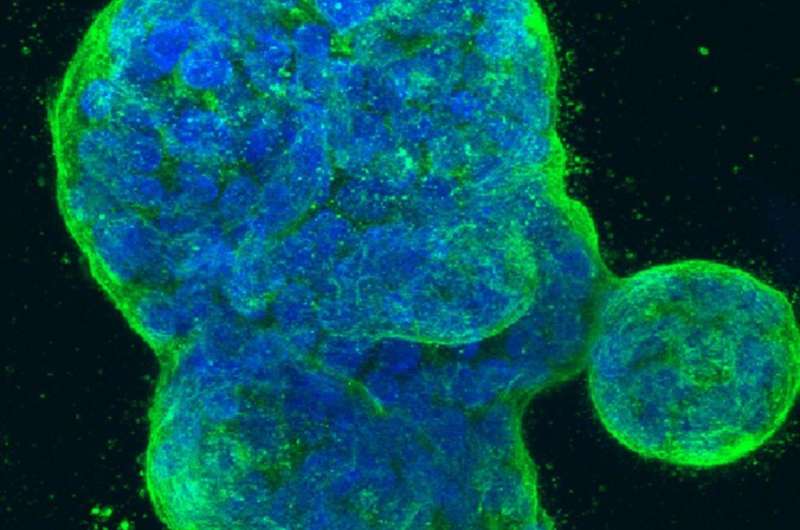Researchers identify new relevant target for PARP inhibitor talazoparib

Drugs that target specific proteins have greatly improved patient outcomes across a broad range of tumor types; however, patients often develop drug resistance and tumor recurrence. There is a great unmet need to identify new targets that could be used for drug development. In a new study published in Cell Chemical Biology, Moffitt Cancer Center researchers report their identification of a new target for the PARP inhibitor drug talazoparib and show that combination treatment with talazoparib and the WEE1 inhibitor adavosertib results in enhanced anti-cancer effects.
The PARP1 protein is an important molecule that is involved in DNA damage repair in cells. Scientists have discovered that drugs that block the repair activity of PARP1 can cause cell death in cancer types that have additional genetic mutations in repair pathways. Several drugs that inhibit PARP1 activity have been approved over the past several years to treat breast and ovarian cancer patients with mutations in the BRCA1/2 genes, including the drugs olaparib, rucaparib, niraparib, and most recently, talazoparib. PARP inhibitors have also shown activity in small cell lung cancer; however, it is unclear how PARP inhibitors work in these tumor types since they do not have mutations in BRCA1/2.
Researchers in Moffitt's Lung Cancer Center of Excellence wanted to determine how PARP inhibitors work in small cell lung cancer and identify other potential drug targets. Rather than using typical approaches to identify new drug targets that focus on single genes, they used a chemical proteomics approach to determine whether PARP inhibitors may target proteins other than PARP1.
The researchers performed a series of laboratory experiments and discovered that out of the four PARP inhibitors approved to treat breast and ovarian cancer, talazoparib had the greatest activity among a panel of small cell lung cancer cell lines. They found that unlike other PARP inhibitors, talazoparib also binds to and inhibits the protein PARP16. This suggests that a potential reason for talazoparib's strong activity in specific small cell lung cancer cells is its ability to target both PARP1 and PARP16. The researchers confirmed that genetic approaches that targeted PARP16 combined with another PARP inhibitor olaparib resulted in enhanced anti-cancer activity in small cell lung cancer and other tumor types, such as Ewing sarcoma.
The researchers wanted to further determine whether combining talazoparib with other drugs could be effective in small cell lung cancer. They performed a drug screen with 240 targeted compounds and discovered that the strongest hit was with the WEE1/PLK1 inhibitor adavosertib. They further showed that combination treatment with talazoparib and adavosertib resulted in enhanced anti-cancer effects and confirmed that targeting PARP16 with genetic approaches combined with olaparib and adavosertib treatment resulted in reduced cell viability compared to either approach alone.
"We believe that PARP16, especially in combination with PARP1, constitutes an attractive anti-cancer target for tumor types with significant unmet medical needs, such as small cell lung cancer," said Uwe Rix, Ph.D., senior author and associate member of the Drug Discovery Department at Moffitt. "While the combination of olaparib with adavosertib has recently been shown to have promising preclinical activity and is currently under clinical investigation, it is possible that the combination of adavosertib with the dual PARP1/PARP16 inhibitor talazoparib could be even more advantageous."
Rix says their discovery could have potential for other tumor types, but more research is needed.
More information: Vinayak Palve et al, The non-canonical target PARP16 contributes to polypharmacology of the PARP inhibitor talazoparib and its synergy with WEE1 inhibitors, Cell Chemical Biology (2021). DOI: 10.1016/j.chembiol.2021.07.008



















